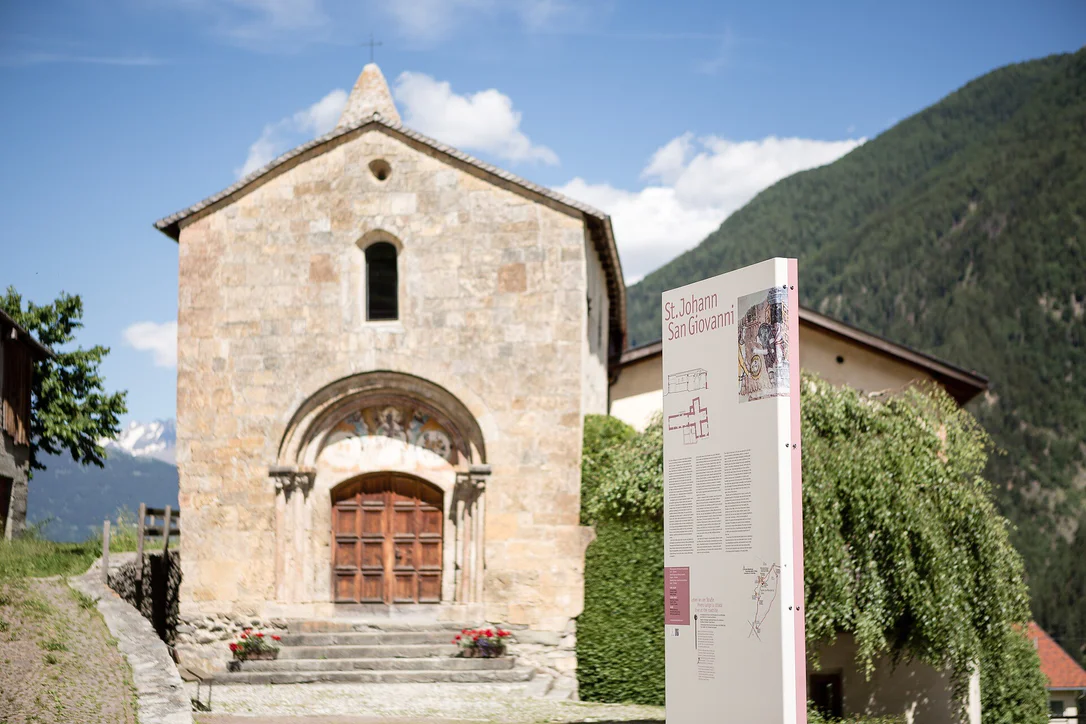St. Nicholas’s Church in Laces is a Romanesque church from the 14th century. Formerly it belonged to the monastery of Laces, now it belongs to the municipality of Laces. The remains of the frescoes by the southern front of the church, which portray the crucifixion of St. Nicholas and St. Christopher, are well worth a look.
Since 2017 it is exibition place of the menhir: the top and bottom parts as well parts of the left upper side of the 107 cm high, 77 cm wide and 12 cm thick stone are missing. It was probably originally located around where the current church stands on the hill and would thus have been visible from afar. As well as the iconic features common to all the male engraved stones from the Etsch valley group, such as scalloped belts, axes, daggers, clubs, bows, various decorative elements and fringed capes, elements are present that belong to the Lombardy group from Val Camonica and Valtellina, such as suns, deer and stylised male figure. Thus the Laces standing stone is great proof of the ancient connection of the Vinschgau and the Etsch valley and the valleys of north-eastern Lombardy.
The church is open daily from 09 a.m. to 6 p.m.




















































































